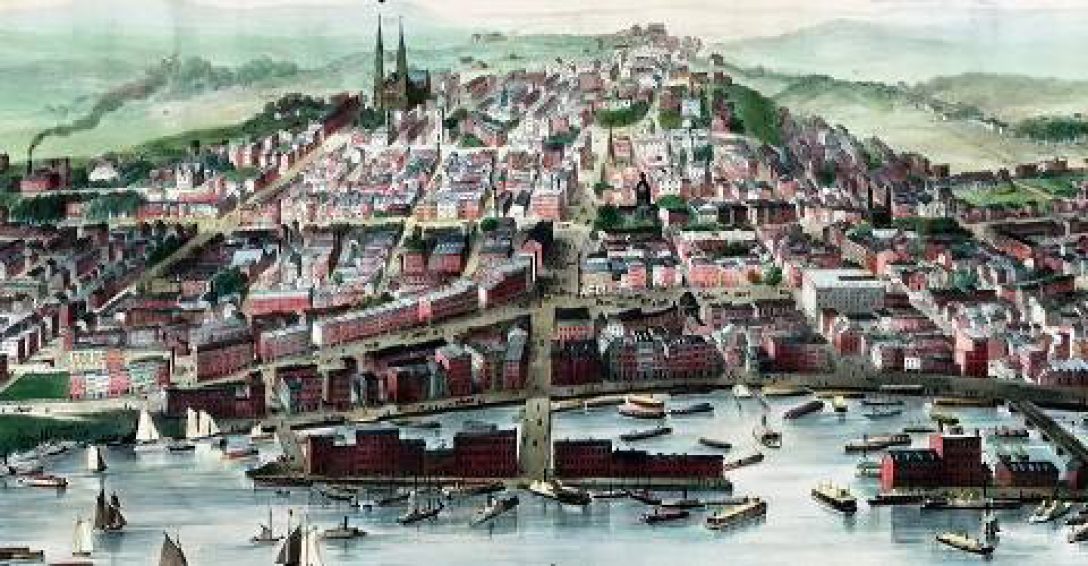John Swinburne is mostly forgotten today, except for the Albany park named after him.
But he was medical pioneer whose worked had major impact on our city, New York State and our country.
An 1888 biography, “A Typical American,” made it clear that he was anything but — it calls him an eminent patriot, surgeon and philanthropist, “The Fighting Doctor,” and “one of Nature’s noblemen.”
John Swinburne was born in Lewis County in 1820; his father died when he was but 12. Despite having to work to support his mother and sisters, Swinburne was educated in local public schools and attended Albany Medical College, where he was first in his class (1846) and was appointed “demonstrator” in anatomy after graduation. He even started a private anatomy school, but soon entered private practice.
When the Civil War came he was made a commander in the New York National Guard, and as chief medical officer was put in charge of the sick at the Albany recruiting depot. He offered his services to Gen. McClellan as a volunteer battlefield surgeon, and was soon sent to Savage’s Station in Virginia .
As the Army of the Potomac retreated from that post on June 29, 1862, Swinburne was one of the few surgeons who remained behind to care for the sick and wounded, and he was noted for treating Union and Confederate soldiers alike. It was a month before all the wounded were removed to other hospitals, and Swinburne applied to Confederate General Stonewall Jackson for permission to visit the wounded Federal prisoners. Jackson’s pass made it clear that Swinburne was not to be treated as a prisoner of war.
He returned to New York, and remained in New York City, where his work on use of quarantines in a cholera epidemic brought him to the attention of the Mayor and the Governor. In 1864, he was made health officer of the Port of New York and immediately put to the task of establishing an effective quarantine facility, which he placed on islands, one of which, Swinburne Island, bears his name to this day. (It’s now part of the Gateway National Recreation Area.)
As we find today with other infectious diseases the cholera epidemic was spread through international travel. In 1865 he was credited with stopping a major outbreak in New York City from the ship “Virginia” from Liverpool and on another ship, “The England” through the use of quarantine.
“Doctor Swinburne … visited the steamers and hospitals at quarantine yesterday and reports them in excellent condition. There have been no cases of cholera on the Virginia for the past week. On the England none of the passenger have been attacked. There are ninety-eight in hospital, of which fifty-eight are convalescent”.
He retired from the Port and went to France, just in time for the outbreak of the Franco-Prussian War. With the support of the American expatriate community, he created the first ambulance corps in Paris to tend to the wounded, and for his efforts he was decorated as a Chevalier of the Legion of Honor, and worked with the Red Cross of Geneva.
Swinburne returned to Albany, where he re-established his private practice and, in 1876, became Professor of Fractures and Clinical Surgery at Albany Medical College, and became one of the first to provide forensic testimony at trials involving medical evidence. He also found time to be elected Mayor (1880) and then to Congress (1884). While doing that he established the Swinburne Dispensary (clinic), which provided free medical services to as many as 10,000 patients a year.

His anonymous biographer wrote:
“His quiet benevolence, yet bold aggressiveness in fighting error and corruption in high places, both in professional and official stations, has given his life a charm unequaled in the past, and has won for him the admiration of the masses of the people.”
He died in Albany on March 28, 1889, and is buried at Albany Rural Cemetery, Section 30, Lot 11.

Carl Johnson from his blog Hoxsie.org .

